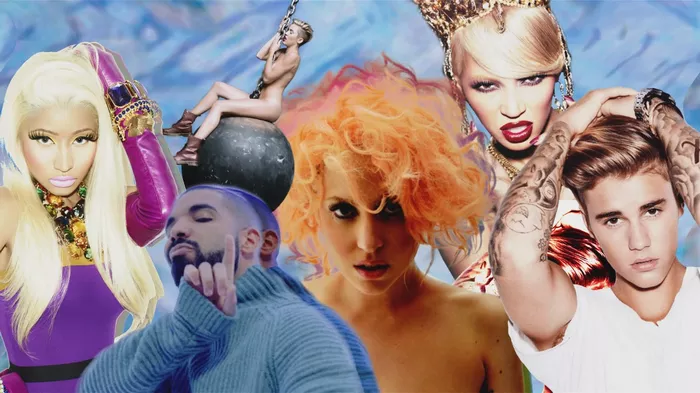The 1970s was a remarkable decade in the history of music. It witnessed the rise of various genres, the emergence of influential artists, and the birth of iconic bands. The 70s was a time when music became a powerful vehicle for expressing social and political movements, as well as personal experiences and emotions. From disco beats to rock anthems and singer-songwriter ballads, the 70s had something for everyone. In this article, we delve into the captivating soundtrack of the 70s and explore the diverse array of popular music that defined the era.
1. Disco: The Rise of Dancefloor Anthems
One of the defining genres of the 70s was disco. Disco music originated in the late 60s and gained immense popularity in the following decade. It was characterized by a rhythmic and infectious beat, often accompanied by orchestral arrangements and soaring vocals. Disco was the sound of the dancefloor, with its groovy basslines and catchy melodies.
Artists like Donna Summer, known as the “Queen of Disco,” brought disco into the mainstream with hits like “Hot Stuff” and “Last Dance.” The Bee Gees also played a significant role in popularizing disco, thanks to their timeless soundtrack for the film “Saturday Night Fever,” which included hits such as “Stayin’ Alive” and “Night Fever.” These songs became anthems of the disco era and epitomized the spirit of late-night dancing and glamorous nightlife.
2. Rock and Roll: From Classic to Progressive
While disco dominated the airwaves, rock and roll continued to flourish and evolve in the 70s. Classic rock acts like Led Zeppelin, The Rolling Stones, and The Who continued to captivate audiences with their electrifying performances and timeless hits. Led Zeppelin’s “Stairway to Heaven” and The Rolling Stones’ “Brown Sugar” are just a few examples of the iconic rock anthems that emerged during this era.
However, the 70s also witnessed the emergence of progressive rock, a subgenre characterized by its complex compositions and experimental soundscapes. Bands like Pink Floyd, Yes, and Genesis pushed the boundaries of rock music, incorporating elements of classical music, jazz, and even electronic sounds. Pink Floyd’s album “The Dark Side of the Moon” became a monumental success and is still considered one of the greatest albums of all time. It showcased the band’s ability to create a seamless musical journey, exploring themes of existentialism and human experience.
3. Singer-Songwriters: Unveiling Personal Narratives
The 70s was also a fertile ground for singer-songwriters who used their music to tell personal stories and reflect on social issues. Artists like Joni Mitchell, Carole King, James Taylor, and Cat Stevens gained widespread acclaim for their introspective lyrics and heartfelt melodies.
Joni Mitchell’s album “Blue” is often hailed as one of the most influential singer-songwriter records of all time. Songs like “Both Sides, Now” and “A Case of You” showcased Mitchell’s ability to craft poetic and deeply personal narratives that resonated with listeners on a profound level. Similarly, Carole King’s album “Tapestry” became a massive success, featuring songs like “You’ve Got a Friend” and “Natural Woman.” These singer-songwriters laid the foundation for a new wave of introspective and authentic storytelling in music.
4. Funk and Soul: Grooves that Moved the Masses
Funk and soul music continued to thrive in the 70s, providing infectious grooves and powerful vocal performances. Artists like James Brown, Stevie Wonder, and Earth, Wind & Fire dominated the charts with their energetic and soulful compositions.
James Brown, known as the “Godfather of Soul,” delivered electrifying performances and released hits like “Get Up (I Feel Like Being a) Sex Machine” and “Super Bad.” Stevie Wonder’s album “Songs in the Key of Life” showcased his versatility and genius as a songwriter, blending elements of funk, soul, and jazz. Earth, Wind & Fire’s blend of funk, disco, and soul resulted in chart-topping hits like “September” and “Shining Star.” These artists brought the dancefloor alive with their infectious rhythms and powerful vocal performances.
5. Punk and New Wave: Rebellion and Innovation
Towards the latter half of the 70s, punk rock emerged as a reaction to the excesses of mainstream music. Punk bands like the Sex Pistols, The Clash, and The Ramones embraced a raw and aggressive sound, coupled with rebellious and confrontational lyrics. Their music was characterized by fast-paced guitar riffs, energetic drumming, and raw vocals.
The Sex Pistols’ single “Anarchy in the U.K.” became a punk anthem, capturing the frustrations and disillusionment of the youth. The Clash’s album “London Calling” showcased their ability to blend punk with other genres like reggae and rockabilly, resulting in a diverse and influential sound. Meanwhile, the Ramones’ self-titled debut album introduced a new wave of stripped-down, high-energy rock and roll.
Conclusion: A Musical Time Capsule
The music of the 70s was a captivating blend of genres and styles that continues to influence artists to this day. From the disco dancefloors to the rebellious punk anthems, the 70s offered a diverse and vibrant musical landscape. The era was defined by its ability to capture the social, political, and personal experiences of a generation through the power of music. As we look back at this golden age of music, we appreciate the enduring legacy left behind by the artists and songs that defined the soundtrack of the 70s.

